sábado, 25 de agosto de 2018
An Electrical Power System for CubeSats Presented by: Benjamin C. de V. Sheard Dept. of Electrical and Electronics Engineering University of Cape Town
An Electrical Power System for CubeSats
Presented by:
Benjamin C. de V. Sheard
Supervisor:
Mr. Samuel I. Ginsberg
Dept. of Electrical and Electronics Engineering
University of Cape Town
Submitted to the Department of Electrical Engineering at the University of Cape
Town in partial fulfilment of the academic requirements for a Master of Science
degree in Electrical Engineering.
ABSTRACT
The advent of CubeSats has provided a platform for relatively low-budget programmes to realise space missions. In South Africa, Stellenbosch University and the Cape Peninsula University of Technology have impressive space programmes and have been involved in numerous successful satellite launches. A number of CubeSat projects are currently in progress and commercial-grade Attitude Determination and Control Systems (ADCS), and communications modules, are being developed by the respective universities. The development of a CubeSat-compatible Electrical Power System remains absent, and would be beneficial to future satellite activity here in South Africa. In this thesis, some fundamental aspects of electronic design for space applications is looked at, including but not limited to radiation effects on MOSFET devices; this poses one of the greatest challenges to space-based power systems. To this extent, the different radiation-induced effects and their implications are looked at, and mitigation strategies are discussed. A review of current commercial modules is performed and their design and performance evaluated. A few shortcomings of current systems are noted and corresponding design changes are suggested; in some instances these changes add complexity, but they are shown to introduce appreciable system reliability. A single Li-Ion cell configuration is proposed that uses a 3.7 V nominal bus voltage. Individual battery charge regulation introduces minor inefficiencies, but allows isolation of cells from the pack in the case of cell failure or degradation. A further advantage is the possibility for multiple energy storage media on the same power bus, allowing for EPS-related technology demonstrations, with an assurance of minimum system capabilities. The design of each subsystem is discussed and its respective failure modes identified. A limited number of single points of failure are noted and the mitigation strategies taken are discussed. An initial hardware prototype is developed that is used to test and characterise system performance. Although a few minor modifications are needed, the overall system is shown to function as designed and the concepts used are proven.
LINK
https://open.uct.ac.za/bitstream/handle/11427/20101/thesis_ebe_2015_sheard_benjamin_charles_de_villiers.pdf?sequence=1
sexta-feira, 24 de agosto de 2018
ENIE 2018 – FEIRA E CONGRESSO-XVII ENCONTRO DE INSTALAÇÕES ELÉTRICAS 28/08/2018 a 30/08/2018-SÃO PAULO BRASIL
LINK
sábado, 18 de agosto de 2018
Research on a GaN HEMT On-Board Charger for Electric Vehicles Thesis for the degree of Doctor of Philosophy Guoen Cao-Dept. of Electronic Systems Engineering Hanyang University
Research on a GaN HEMT On-Board Charger for Electric Vehicles
Thesis for the degree of [Doctor of Philosophy Guoen Cao Hanyang University Graduate School
ABSTRACT
Research on a GaN HEMT On-Board Charger for Electric Vehicles Guoen Cao Dept. of Electronic Systems Engineering The Graduate School Hanyang University With an accelerating global energy crisis and deteriorating environmental problems, electric vehicle (EV) technologies have attracted growing interest due to their reduced fuel usage and greenhouse emissions. The battery charger plays a critical role for the acceptance and development of EVs. Because a battery is generally used as the main power source, a high conversion efficiency, high power density, and lightweight on-board-charger (OBC) is needed in order to maximize the energy utilization. Gallium nitride based high electron-mobility transistors (GaN HEMTs) are potential candidates as next-generation power switching devices due to the enormous potential use in the applications of high frequency, high temperature, and high output power, in particular of battery charger applications. Although much progress has been achieved in the development of GaN HEMTs, a few important issues such as current collapse effects should be evaluated before wide deployment is possible. Since evaluating performance in power semiconductors and selecting the optimal topologies are important steps in the design and development of power electronics circuits, this thesis is concerned with the performance evaluation of the new GaN HEMTs and the design of an isolated OBC that uses GaN HEMTs to achieve high efficiency for future applications in EVs. GaN HEMTs suffer from current collapse effect in operation regions, which leads the dynamic on-resistance to increase when a high voltage is applied to the transistor. In order to measure the dynamic on-resistance and evaluate the current collapse effect of newdesigned GaN HEMTs, a novel soft-switching measurement circuit based on synchronous buck topology is introduced. To apply high-voltage and high-current stresses to the device without additional spikes and oscillation, the resonance technique has been employed. As a result, the proposed circuit can produce sufficient high frequency switching voltage and current stresses equal to or greater than that would be found in real power applications to the devices with general equipment. In order to achieve accurate measurement of onresistance under high frequency switching operations and eliminate the saturation of conventional methods, an active voltage clamp circuit is developed. A prototype circuit has been built. Experiments conducted under extreme conditions have been carried out. The simulation and experimental results confirm the validity of the proposed circuit. After evaluating characteristics of the new-designed GaN HEMTs, an isolated high efficiency on-board battery charger using these new power devices is presented. The OBC has a two-stage structure, where the first stage is an interleaved boost AC-DC power factor correction (PFC) converter and the second stage is a full-bridge LLC resonant converter. As the GaN HEMT has very low gate threshold voltage, a high-speed isolated gate driver circuit with negative voltage has been developed for the efficient operation of the two stages For the GaN-based PFC converter, circuit modeling and the power stage design method are discussed in detail. To keep high power factors and high dynamic performance under a wide input and output range, a fuzzy logic PI current controller and a non-linear voltage controller based on the circuit model are proposed. A 1.5 kW hardware prototype is developed and a maximum system efficiency of 97.5% is measured while operating with the switching frequency of 200 kHz. The results also show a considerable increase in system efficiency and superior performance of the proposed converter compared to the conventional control methods.
For the full-bridge LLC resonant converter, a novel design method for lithium battery charger applications is proposed. According to the charging characteristics, three operating points are selected for the optimum design. A thorough analysis of design procedure is performed, considering the performance evaluation of GaN HEMTs. A 1.5 kW prototype circuit was built, with an output voltage range of 250 V to 420 V. Experimental results show that high efficiency of 95.9% is achieved by using GaN HEMTs and it has resulted in 0.9% improvement compared to the conventional silicon-based converter. In order to implement digital control and control the two-stage in an effective way, a two-core floatingpoint DSP is employed for the OBC. Keywords Electric vehicles, battery charger, GaN HEMT, evaluation circuit, interleaved PFC, fuzzy logic control, soft-switching, LLC resonant converter
SEPOC 2018 - 11th SEMINAR ON POWER ELECTRONICS AND CONTROL-Santa Maria RS,BRASIL 21-24 October 2018
SEPOC 2018 - 11th SEMINAR ON POWER ELECTRONICS AND CONTROL-Santa Maria RS,BRASIL 21-24 October 2018
The seminar's objective is to provide interaction between academia and industry to discuss the latest cutting-edge technologies on Power Electronics and Control and their applications. In 2018, the conference is themed on Industry Applications. Authors are invited to submit original research work according to the topics listed below.
Power Electronics topologies and design
Modeling, control and design of renewable energy conversion systems
Electrical machines design, control and drives
Control theory and applications
Power systems analysis, modeling, operation and control
Smart grid, grid protection and energy quality
Distributed energy planning, management and expansion
Efficiency, technologies and reliability of electronic equipments
Topologies and control for smart lighting systems
Automotive, aerospace, transportation and telecommunication systems
Automation systems and robotics
Standards, codes and education topics on electrical engineering
LINK ORIGINAL
http://coral.ufsm.br/sepoc/sepoc2018/index.php/pt/
sexta-feira, 17 de agosto de 2018
TRANSFORMADORES FACTOR K - K-factor & Transformers
Transformadores con Clasificación del Factor K
DESCRIÇÃO
Hoy en día, en los locales de trabajo industrial, la proliferación de dispositivos de estado sólido (reactores de iluminación, sistemas de movimientos y control de motores, equipamientos de comunicaciones, y otras cargas de motorización DC) ha criado algunos relevantes problemas para ingenierías de especificaciones, contratantes y propietarios de negocios. La naturaleza no lineal de las fuentes de alimentación de modelos con conmutación por sistemas de estado sólido generan corrientes de armónicos que, a su vez, generan pérdidas adicionales, que hacen que los transformadores (algunas de estas pérdidas son profundas dentro de los bobinados y algunas son más próximas de la superficie) y los neutros del sistema se sobrecalienten y se destruyan.
Efecto de los armónicos en los transformadores en seco
Hay diversas situaciones que pueden crear condiciones para problemas de armónicos en transformadores, incluyendo la adición del equipamiento a un sistema eléctrico existente, o la adición de instalaciones de perfeccionamiento o expansiones a una fuente de potencia existente. Los transformadores con especificaciones de factor K están diseñados para reducir los efectos de calentamiento de las corrientes de armónicos creadas por cargas no lineales. La clasificación del factor K, atribuida a un transformador, es un índice da habilidad del transformador de soportar un índice armónico en su corriente da carga, permaneciendo dentro de los límites de la temperatura de funcionamiento. Una clasificación específica del factor K indica que un transformador puede suministrar, además de la salida nominal de carga en KVA, una carga de una cantidad especificada de índice armónico. En 1990, UL (Underwriters Laboratories) desarrolló el método de cálculo de clasificación del factor K para evaluar la habilidad de los transformadores en soportar los efectos de los armónicos. El factor K no significa que el transformador puede eliminar los armónicos. El test de UL está dirigido al calentamiento de los bobinados debido a las cargas no lineales generales y al sobrecalentamiento del conductor neutro.
Existen dos métodos de cálculo del factor K:
- El método UL
- El método normalizado
El método UL está basado en la corriente nominal eficaz "rms" del transformador. Generalmente se usa cuando la corriente eficaz es medida o mensurable y se define como:
Donde:
h = orden del armónico;
Ih(pu) = Corriente rms del armónico expresado en pu (por unidad) de la corriente nominal eficaz del transformador.
El método Normalizado está basado en la corriente fundamental de la carga. Las medidas de los armónicos están hechas frecuentemente con un analizador de armónico. La mayoría de los analizadores armónicos tienen respuestas de salida de los armónicos en pu (valores por unidad) de la corriente fundamental. Consecuentemente, el método sería usado. El método normalizado se define de la siguiente manera:
Donde:
Corriente fundamental en pu (el 1° armónico = 100%);
Un ejemplo de los dos métodos para el mismo espectro armónico de los datos es el siguiente. Para el ejemplo, suponemos que las medidas se efectuaron para obtener (pu):
Hasta el presente, las literaturas industriales y los comentarios se refieren a un número limitado de clasificaciones del factor K: K-1, K-4, K-9, K-13, K-20, K-30, K-40.
En teoría, un transformador podría estar diseñado para otras evaluaciones de factor K entre estos valores, así como para valores más elevados. Las clasificaciones generalmente referenciadas están de acuerdo con ANSI/IEEE C57.110-1986 como sigue:
K-1: Esta es la evaluación de todo el transformador convencional que fue diseñado para soportar solamente los efectos de calentamiento de las pérdidas normales y de las pérdidas adicionales por corrientes parásitas (eddy losses) resultantes de 60Hz, con el transformador cargado con corriente sinusoidal. Tal unidad puede o no estar diseñada para soportar el calentamiento adicional de los armónicos en su corriente de carga.
K-4: Un transformador con esta evaluación se diseñó para suministrar KVA nominal, sin sobrecalentamiento, a una carga constituida de 100% de frecuencia normal 60Hz, corriente sinusoidal en la fundamental, más:
- 16% de la fundamental como la 3ª corriente armónica;
- 10% de la fundamental como 5ª;
- 7% de la fundamental como 7ª;
- 5,5% de la fundamental como el 9ª;
- Porcentajes menores a través de la 25ª armónica.
El "4" indica su habilidad de soportar cuatro veces las pérdidas de corriente de “eddy” de un transformador K-1.
K-9: Un transformador K-9 puede soportar 163% de la carga armónica de un transformador clasificado como K-4.
K-13: Un transformador K-13 puede acomodar 200% de la carga armónica de un transformador clasificado como K-4.
K-20, K-30, K-40: El número más elevado de cada una de estas clasificaciones del factor K indica la habilidad de trabajar con cantidades sucesivamente mayores de índices armónicos de la carga sin sobrecalentarse.
La siguiente tabla muestra el ejemplo de cargas de factor K
CARGA - FACTOR K
Iluminación con lámparas de descargas - K-4
UPS con filtro de entrada opcional - K-4
Máquinas de soldadura - K-4
Equipamiento de calentamiento inductivo - K-4
PLCs y controles de estado sólido (otros además de drives variadores de velocidad). - K-4
Equipamientos de Telecomunicación (por ejem. PBX) - K-13
UPS sin filtros de entrada - K-13
Alimentación de receptáculos multihilos en general en áreas con instrumentos de cuidados con la salud y aulas de escuelas, etc. - K-13
Fuentes de circuitos con receptáculos multihilos para equipamientos de inspección y pruebas en sectores productivos o líneas de producción - K-13
Cargas de Equipos Servidores (Mainframe) - K-20
Drives de estado sólido para motores (Drives variadores de velocidad) - K-20
Alimentación de circuitos con receptáculos en áreas importantes de seguridad y cuartos de cirugías y recuperación de hospitales - K-20
*Reescrito con permiso de EDI Magazine
El factor K debe marcarse claramente en la placa de identificación del transformador.
Informaciones Técnicas:
Clase de temperatura: B (130°C) o F (155°C)
K-FACTOR TRANSFORMERS
K-factor rating is optionally applied to a transformer,
indicating its suitability for use with loads that draw non
sinusoidal currents. The K-factor is given by the following
equation [6, 9].
where:
h= harmonic number, Ih = the fraction of total rms load current
at harmonic number h
K-factor rated transformers have not been evaluated for use
with harmonic loads where the rms current of any singular
harmonic greater than the tenth harmonic is greater than 1/h of
the fundamental rms current.
What is K-Factor?
K-factor is a weighting of the harmonic load currents according to their effects on transformer heating, as derived from ANSI/IEEE C57.110. A K-factor of 1.0 indicates a linear load (no harmonics). The higher the K-factor, the greater the harmonic heating effects. When a non-linear load is supplied from a transformer, it is sometimes necessary to derate the transformer capacity to avoid overheating and subsequent insulation failure. The reason for this is that the increased eddy currents caused by the harmonics increase transformer losses and thus generate additional heat. Also, the RMS load current could be much higher than the kVA rating of the load would indicate. Hence, a transformer rated for the expected load will have insufficient capacity. The K-Factor is used by transformer manufacturers and their customers to adjust the load rating as a function of the harmonic currents caused by the load(s). Generally, only substation transformer manufacturers specify K-factor load de-rating for their products. So, for K-factors higher than 1, the maximum transformer load is de-rated.
terça-feira, 14 de agosto de 2018
Improved P-f/Q-V and P-V/Q-f Droop Controllers for Parallel Distributed Generation Inverters in AC Microgrid Chethan Raj Da,⁎, D.N. Gaonkara, Josep M. Guerrero-aDepartment of Electrical and Electronics Engineering, NITK, Surathkal, Mangalore, India bDepartment of Energy Technology, Aalborg University, Aalborg
Improved P-f/Q-V and P-V/Q-f Droop Controllers for Parallel Distributed Generation Inverters in AC Microgrid Chethan Raj Da,⁎, D.N. Gaonkara, Josep M. Guerrerob
aDepartment of Electrical and Electronics Engineering, NITK, Surathkal, Mangalore, India bDepartment of Energy Technology, Aalborg University, Aalborg, Denmark joz@et.aau.dk
Abstract-Distributed generation inverters are generally operated in parallel with P-f/Q-V and PV/ Q-f droop control strategies. Due to mismatched resistive and inductive line impedance, power sharing and output voltage of the parallel DG inverters deviate from the reference value. This leads to instability in the microgrid system. Adding virtual resistors and virtual inductors in the control loop of droop controllers improve the power sharing and stability of operation. But, this leads to voltage drop. Therefore, an improved P-f/Q-V and P-V/Q-f droop control is proposed. Simulation results demonstrate that the proposed control and the selection of parameters enhance the output voltage of inverters.
Keywords-Distributed generation inverters, droop control, microgrid, output impedance, virtual resistors, virtual inductors.
1. Introduction Distributed generation (DG) systems use renewable energy resources such as wind, solar, tidal energy, and some non-renewable energy sources such as fuel cells, gas turbines, microturbines, and generators [1]. As compared to traditional power systems, DG systems are decentralized and highly flexible [2]. Hence, accounts for reduced transmission cost and improved stability and reliability of power systems [2]. The distributed power supply in DG systems is not controllable. When directly connected, causes negative impact on the power grid [3]. To avoid this adverse effect on the power grid, United States Electrical Reliability Technology Solutions Consortium has studied the role of distributed power in low-voltage power grids and proposed the concept microgrid [4],[5].
Microgrid can be categorized as AC, DC and AC-DC microgrids [5], [6],[7]. In AC microgrids the parallel operation of DG inverters can be divided into wired and wireless parallel control. Wired parallel control include circular chain control (3C) [8], centralized control [9], and master slave control [10], among others. Wired parallel control strategy uses interconnected signal lines for communication between the DG inverters. However, too many communication signal lines leads to a complex structure of the microgrid and inhibits expansion. In order to solve the signal line problem of wired interconnection control, a wireless parallel control strategy 2 based on active and reactive power droop control is proposed [11], [12]. Wireless control includes droop control [10], [12],[33] reverse droop control [14], hierarchical droop control [12], improved droop control [15], [16], [17] and virtual power droop control [18], among others.
Droop control in a microgrid has a broad application prospects, as it does not require physical communication links and easy to achieve plug and play operation [11]. The traditional P-f/Q-V droop control and P-V/Q-f droop control as the research background, the main research is summarized on the following aspects: Droop decoupling control strategy [12], droop coefficient self-tuning optimization algorithm [19], virtual impedance control [20], [21]. In an inductive line environment, droop control can achieve better results. But, mostly for microgrid voltage level of 10 kV the line impedance is resistive, thus affects the droop control performance. The use of traditional droop control method makes it difficult to achieve precise power sharing and circulation suppression [22]. A variety of improved droop control methods are proposed. In [23], [24] an improved droop control is proposed by designing control parameters, so that the inverter output impedance is always inductive. However, this method has a limited range of effective output impedance adjustment. In [25], by adding differential links in the traditional droop control equation, the power sharing of the parallel DG inverter is quickly stabilized. But this leads to harmonic amplification and output voltage distortion. Virtual impedance method [20], [21], [26] is adopted for parallel DG inverters to improve power sharing under different line conditions. However, virtual impedance does not completely eliminate the influence of line impedance and increases the voltage drop. In an actual microgrid system, differences in parameters and line impedance, makes active and reactive powers not completely decoupled, thus affecting the accuracy of the droop controllers.
In view of the aforesaid problem, by amplitude frequency characteristics analysis, different control parameters effects on the output impedance of DG inverters and appropriate control parameters are selected. In order to solve the parameters differences and uneven distribution of power between the parallel DG inverters in a microgrid, virtual resistors and inductors are added into the control loop of the droop controllers. The introduction of virtual resistors and inductors cause DG inverter output voltage to drop. In order to reinstate the effect, an improved P-f/Q-V and P-V/Q-f droop with secondary control is proposed. The paper is organized as follows. In Section 2, power flow characteristics of droop control is presented for DG inverters. In Section 3, dual loop control parameters are altered using virtual resistors and inductors for improving power sharing between DG inverters and also secondary control is proposed to improve the voltage deviations. In Section 4, simulation results are presented. Finally, the concluding remarks are deliberated in Section 5.
LINK
https://www.researchgate.net/publication/325231811_Improved_P-fQ-V_and_P-VQ-f_Droop_Controllers_for_Parallel_Distributed_Generation_Inverters_in_AC_Microgrid
domingo, 12 de agosto de 2018
Study on Parallel Operation for Distributed Generation Inverter based on Droop control Kim Hyun-jun Department of Electrical Engineering Graduate School, Myongji University
Study on Parallel Operation for Distributed Generation Inverter based on Droop control Kim Hyun-jun Department of Electrical Engineering Graduate School, Myongji University Directed by Professor Han Byung-moon
When the droop control is conducted through the inverter for distributed generation, active/reactive power coupling occurs because of the resistive component of the output impedance. In case of long distance distribution line, the voltage drop caused by the line impedance between the PCC and output voltage changes initially designed property curves of the Q-V droop. So, the control performance of Q-V droop is deteriorated and it causes an error of reactive power control and distribution. Therefore, a new droop control, which is to improve the power coupling and the accuracy of reactive power, is proposed in this paper. Its effectiveness is proved by the performance evaluation that relates to unbalanced power compensation, which should be prepared by the inverter for distributed power, random switch and system reconnection that are required when the drive mode is converted. In general, the droop control is used for the high voltage system, so that resistive component of line impedance is ignored because of significant inductive However, the line impedance has more significance in resistive component than inductive component in the low power distribution system, so that the power coupling occurs. To solve this problem, many of the improved droop control method have been proposed in various ways. Most typical method is the virtual impedance type. The virtual impedance type readjusts the output impedance to have inductivity, even though there is a significant resistive component caused by the output impedance of the inverter and low voltage line impedance. Therefore, it is effective to remove the power coupling that is generated by the resistive component. However, increased virtual impedance can also increase reactive power control or distribution error. In addition, though the virtual impedance type prevents power coupling, the reactive power control or distribution error caused by the line impedance can not be compensated. Therefore, there should be an additional control method to improve the reactive method and distribution accuracy influenced by the line impedance. There are two types of general methods; One is Q-VPCC droop control type, which directly measure the PCC voltage using the communication and conduct droop control. The other is indirect Q-V voltage droop control type that estimates the drop control of line impedance and compensated it. In the Q-VPCC droop control type, each inverter is controlled by identical PCC voltage, so that it is not influenced by the line impedance and enables accurate reactive power control and distribution. However, additional voltage sensor to measure PCC voltage should be installed, and inverters for distributed power are located far away from the PCC, thereby requiring communication line to deliver the information of PCC voltage. Therefore, indirect voltage droop control method has been proposed to make up for the defect of direct voltage type. The approximated value of the voltage drop component caused by the line impedance is calculated by active/reactive power, so that the PCC voltage can be estimated and it enables accurate reactive power control and distribution. However, most indirect voltage types use approximated value of voltage drop caused by active/reactive power, so that it is only effective for small line impedance. Since the large value of line impedance can lead to significant error of approximated voltage drop value, reactive power control and distributed error cannot be completely improved. It also requires the information of the line impedance. Therefore, a new droop control, which is to solve defects of the power coupling, reactive power control, and distribution is proposed in this paper. The proposed method conducts the droop control using the dq transformation. Since the droop control is conducted on the dq coordinate, the Q-V droop voltage control method becomes similar to the DC droop control and the power coupling is removed. Therefore, output impedance component in the normal condition, since the DC voltage value is controlled. In other words, the power decoupling is enabled without adding virtual impedance to the droop controller. In addition, errors of reactive power control and distribution that occurs because of the error of voltage drop in the line impedance can be compensated by calculating accurate voltage drop value on the dq coordinate. Using the proposed droop control method, unbalanced load compensation, random switch performance, and system reconnection issues were handled that were also fundamental performance index for the inverter of distributed power. Finally, the PSCAD/EMTDC simulation and two of 5 kw prototype inverters for distributed power were produced and utilized in the experiment of theoretical verification.
Keyword Droop Control, Seamless Transfer, Inverter-based distributed generator(DG), Reconnection, Energy Storage System, Reactive power sharing compensation Unbalanced Voltage compensation
Assinar:
Postagens (Atom)









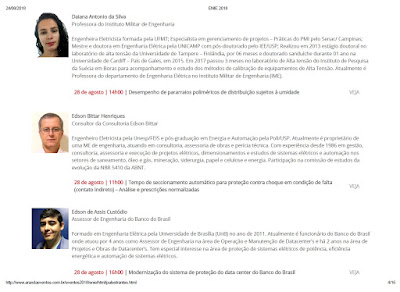

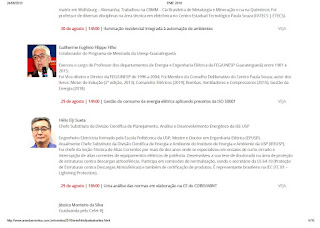




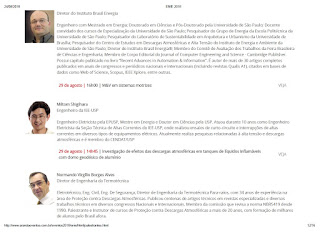
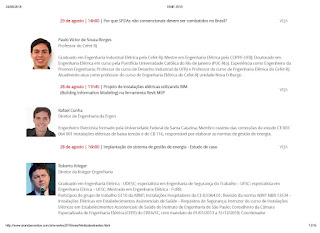

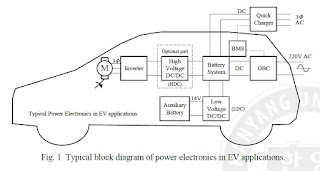
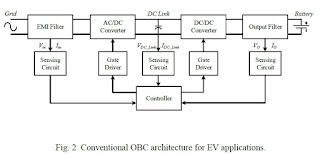
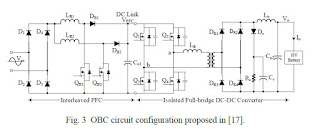
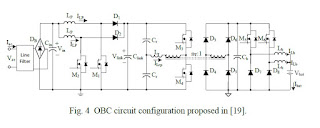
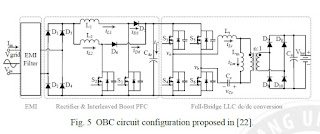
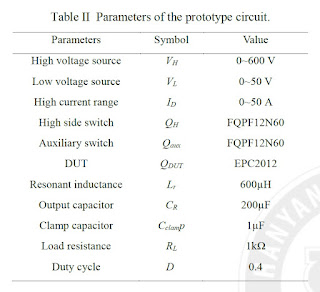
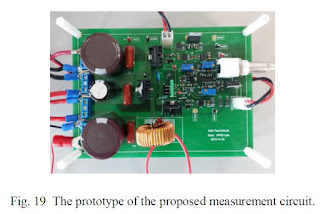

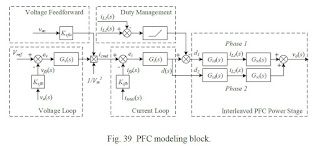
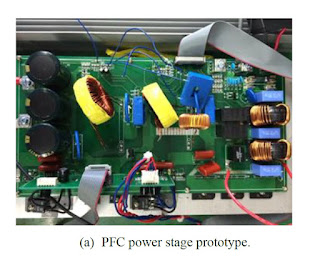
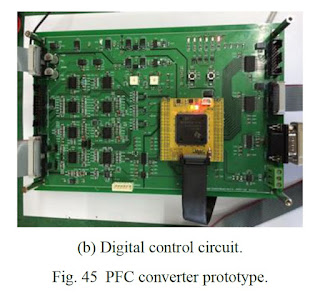
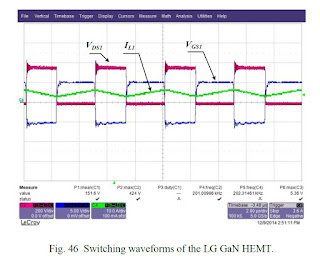
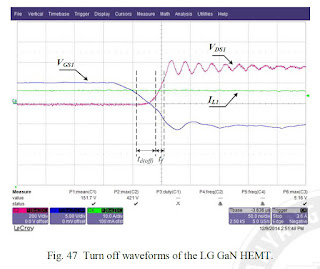
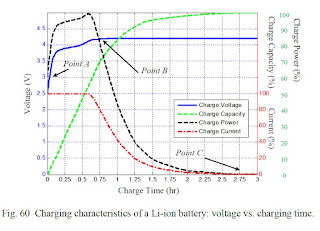
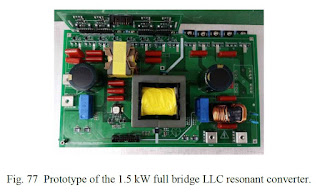
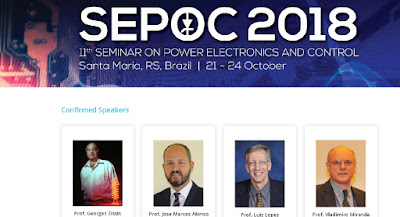
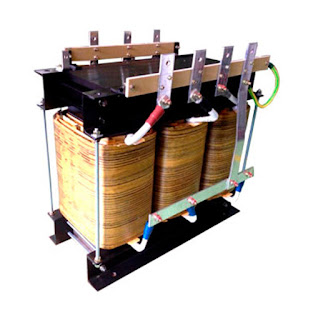


























 JOSIL ARTISTA PLASTICO FORTALEZA CEARA BRASIL AV.HERACLITO GRAÇA 41 TEL(85)32542378
JOSIL ARTISTA PLASTICO FORTALEZA CEARA BRASIL AV.HERACLITO GRAÇA 41 TEL(85)32542378















